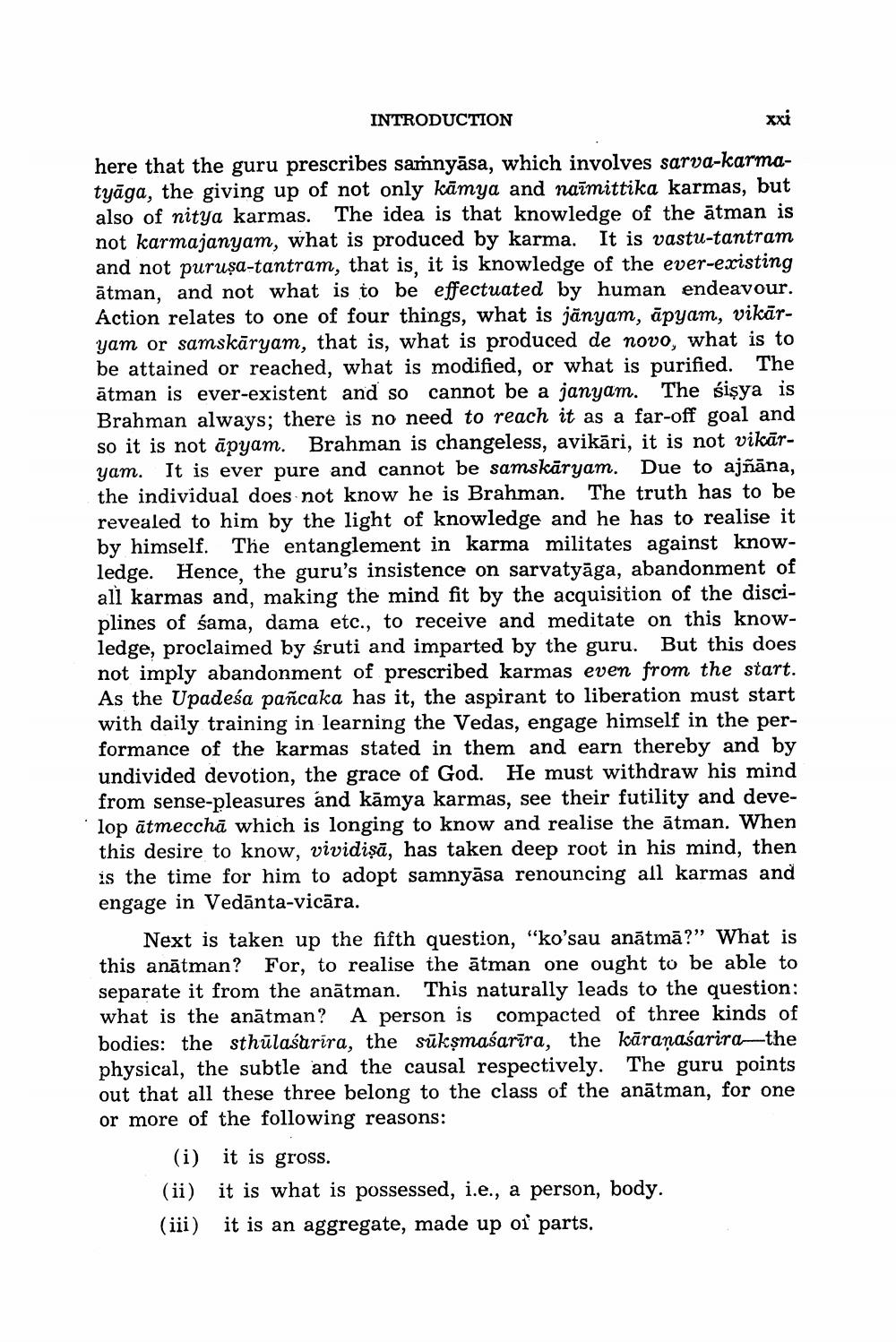________________
INTRODUCTION
xxi
here that the guru prescribes sarnyāsa, which involves sarva-karmatyāga, the giving up of not only kāmya and naimittika karmas, but also of nitya karmas. The idea is that knowledge of the ātman is not karmajanyam, what is produced by karma. It is vastu-tantram and not puruşa-tantram, that is, it is knowledge of the ever-existing ātman, and not what is to be effectuated by human endeavour. Action relates to one of four things, what is jānyam, āpyam, vikāryam or samskāryam, that is, what is produced de novo, what is to be attained or reached, what is modified, or what is purified. The ātman is ever-existent and so cannot be a janyam. The sisya is Brahman always; there is no need to reach it as a far-off goal and so it is not āpyam. Brahman is changeless, avikāri, it is not vikāryam. It is ever pure and cannot be samskāryam. Due to ajñāna, the individual does not know he is Brahman. The truth has to be revealed to him by the light of knowledge and he has to realise it by himself. The entanglement in karma militates against knowledge. Hence, the guru's insistence on sarvatyāga, abandonment of all karmas and, making the mind fit by the acquisition of the disciplines of sama, dama etc., to receive and meditate on this knowledge, proclaimed by śruti and imparted by the guru. But this does not imply abandonment of prescribed karmas even from the start. As the Upadeśa pañcaka has it, the aspirant to liberation must start with daily training in learning the Vedas, engage himself in the performance of the karmas stated in them and earn thereby and by undivided devotion, the grace of God. He must withdraw his mind from sense-pleasures and kāmya karmas, see their futility and develop ātmecchā which is longing to know and realise the ātman. When this desire to know, vividişā, has taken deep root in his mind, then is the time for him to adopt samnyāsa renouncing all karmas and engage in Vedānta-vicāra.
Next is taken up the fifth question, "ko'sau anātmā?” What is this anātman? For, to realise the ātman one ought to be able to separate it from the anātman. This naturally leads to the question: what is the anātman? A person is compacted of three kinds of bodies: the sthūlasarira, the sūksmaśarīra, the kāranaśarira-the physical, the subtle and the causal respectively. The guru points out that all these three belong to the class of the anātman, for one or more of the following reasons:
(i) it is gross. (ii) it is what is possessed, i.e., a person, body. (iii) it is an aggregate, made up oi parts.




